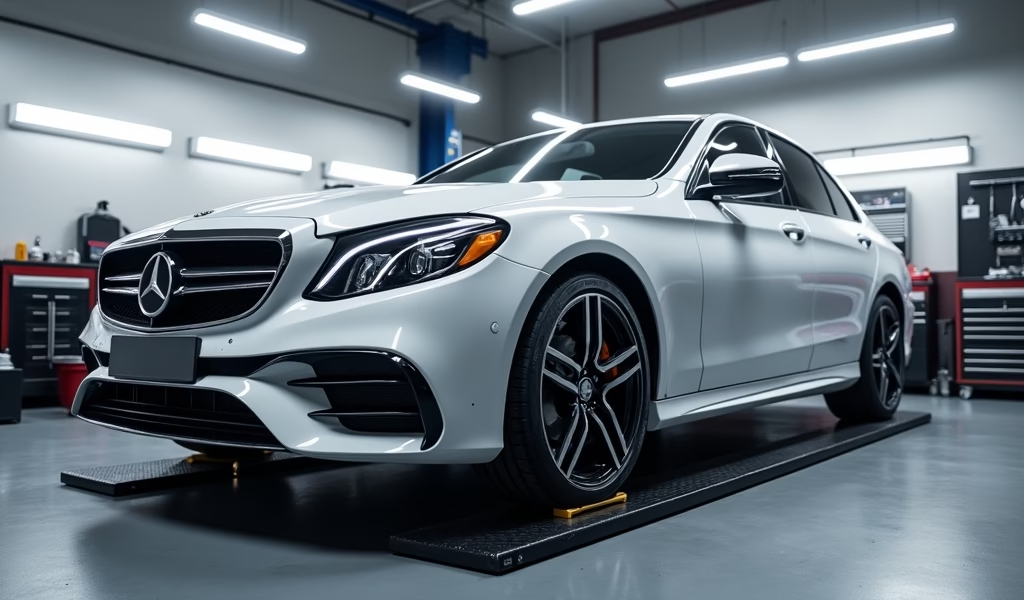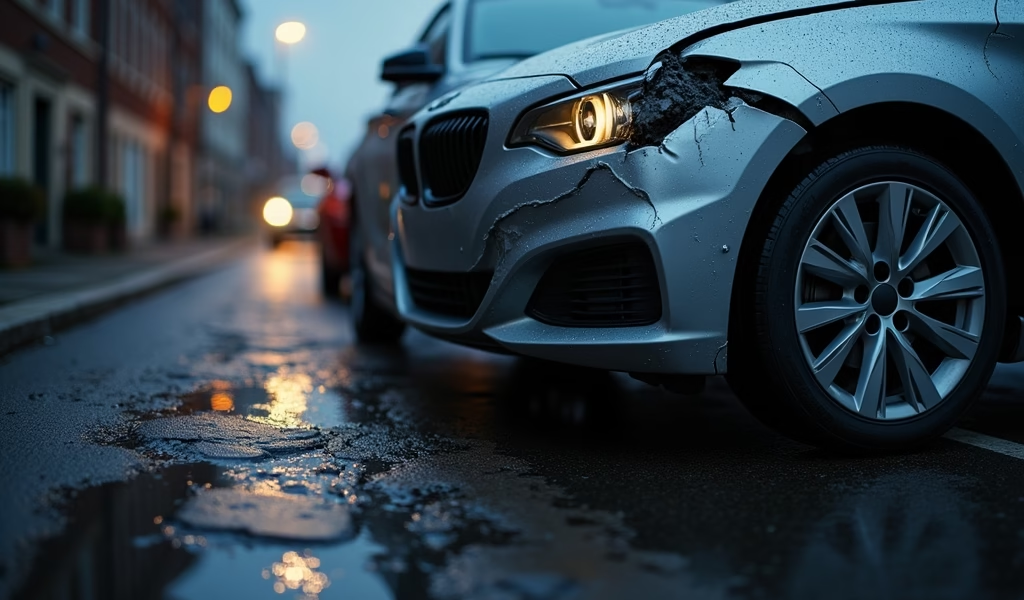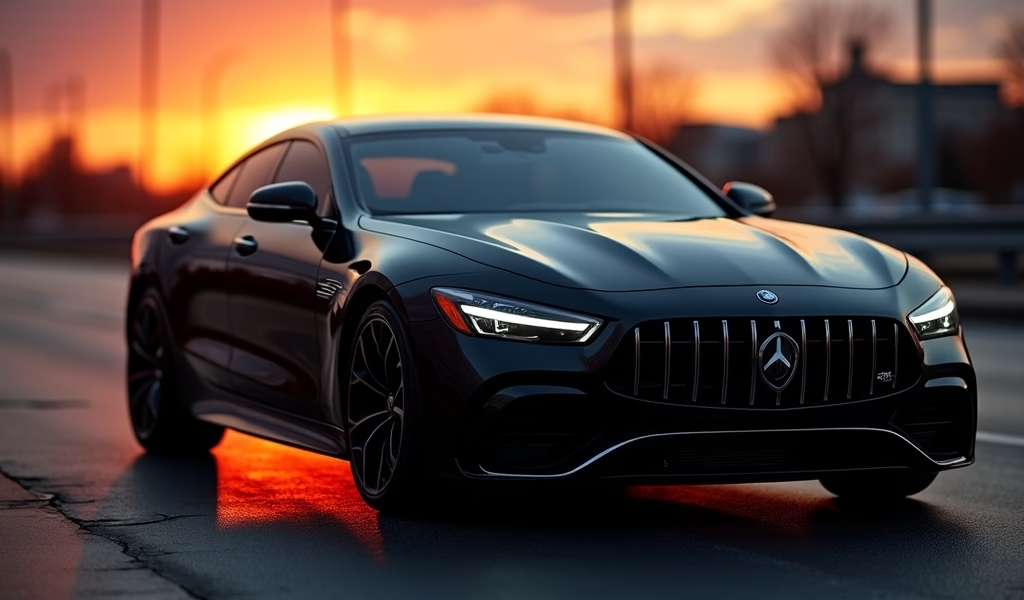Overview
This article outlines seven essential car repair strategies after a hit and run accident, emphasizing the importance of proper documentation, understanding insurance coverage, and seeking legal assistance to ensure fair compensation. The guide combines mechanical expertise with legal advice, covering bumper repairs, paintless dent repair, paint matching, structural repairs, wheel alignment, glass replacement, and mechanical systems checks while providing a timeline for recovery and insurance navigation tips.
Table of Contents
- Understanding Hit and Run Accidents
- Why Legal Help Matters
- 7 Essential Car Fixes After a Hit and Run
- Documenting the Damage for Legal Purposes
- Navigating Insurance After a Hit and Run
- The Recovery Timeline: What to Expect
- Conclusion
- Frequently Asked Questions
The screech of tires, the crunch of metal, and then… silence. If you’ve ever been the victim of a hit and run accident, you know that sinking feeling when you realize the responsible driver has fled the scene. I’ve spent 20 years fixing cars damaged in these incidents, and I can tell you—the aftermath combines both mechanical and legal headaches that few other auto situations match.
Having a solid hit and run attorney in your corner can make all the difference between a stressful, expensive ordeal and a properly managed recovery process. As someone who’s partnered with legal professionals throughout my career as a master technician, I’ve seen firsthand how the right representation changes outcomes for drivers left holding the bag after these cowardly acts.
This guide will walk you through the seven most effective repair strategies while explaining how legal assistance fits into the recovery puzzle. I’ve designed this article to help you understand both the mechanical and legal sides of hit and run incidents, drawing from hundreds of real-world cases I’ve encountered at my shop.
Understanding Hit and Run Accidents
Hit and run accidents aren’t just inconvenient—they’re violations of the law in every state. These incidents occur when a driver collides with another vehicle, pedestrian, or property and then leaves without identifying themselves or rendering aid. According to the National Highway Traffic Safety Administration, hit and runs account for about 11% of all reported crashes.
From my years behind the repair bay, I’ve noticed these accidents typically fall into three categories: parking lot side-swipes, intersection impacts, and roadway collisions. Parking incidents are the most common, often happening when no witnesses are present. The damage ranges from minor scratches to severe structural issues depending on speed and impact angle.
As both a mechanic and someone who’s helped countless customers through these situations, I’ve learned that the first 24-48 hours after a hit and run are critical. During this window, surveillance footage might still be available, witnesses’ memories are fresh, and physical evidence hasn’t been compromised by weather or traffic.
When customers roll into my shop with hit and run damage, my first question is always, “Have you contacted the police?” Filing a police report isn’t just a legal formality—it’s the foundation for any insurance claim or potential legal action if the responsible party is later identified. A hit and run lawyer will tell you the same thing.
Why Legal Help Matters

Think of a hit and run attorney as your transmission specialist for legal matters. Just as I wouldn’t expect you to rebuild a complex gearbox without proper tools and knowledge, navigating the aftermath of a hit and run without legal guidance can leave valuable compensation on the table.
An experienced hit and run attorney brings several crucial advantages to your situation:
- They understand how to leverage uninsured motorist coverage in your policy
- They can identify alternative sources of compensation when the at-fault driver isn’t found
- They know how to document evidence that strengthens your claim
- They communicate with insurance adjusters who might otherwise minimize your payout
- They ensure all damage—both visible and hidden—is properly addressed
I’ve seen countless cases where drivers initially thought their insurance would “handle everything,” only to discover their claim denied or significantly undervalued. One customer brought in a seemingly minor rear bumper hit and run damage that our inspection revealed had actually compromised the vehicle’s entire exhaust system mounting points. Without legal representation, the insurance initially approved only the visible damage repairs.
Working with a lawyer after a car accident doesn’t mean you’re being litigious—it means you’re protecting yourself from potentially bearing costs that should be covered. Most reputable hit and run attorneys offer free consultations and work on contingency fees, meaning they only get paid if you receive compensation.
7 Essential Car Fixes After a Hit and Run
Now let’s get to the nuts and bolts of post-hit and run repairs. I’ve identified seven key fixes that address the most common damage patterns I see in my shop. Each solution is matched to specific types of collision damage to help you understand what might be necessary for your vehicle.
1. Bumper Repair and Replacement
Modern bumpers are designed to absorb impact and protect vital components. After a hit and run, I typically find damage ranging from scuffs to complete detachment. For minor scratches and dents, we can often repair the existing bumper through plastic welding and refinishing—a process that saves both money and original parts.
However, if the impact has cracked the bumper, damaged the mounting brackets, or affected sensors (like parking assist or adaptive cruise control), replacement becomes necessary. Today’s bumpers aren’t just cosmetic—they’re integrated with safety systems that require precise calibration after repair.
Cost range: $350-900 for repairs, $700-1,800 for replacement with calibration
2. Paintless Dent Repair (PDR)
For dents without paint damage—often from parking lot side-swipes—PDR offers an excellent solution. This technique uses specialized tools to massage the metal back to its original shape without disturbing the factory finish. As a certified PDR technician, I can tell you it’s like watchmaking—it requires patience, precision, and years of practice.
PDR works best when the dent hasn’t creased or stretched the metal and when the paint remains intact. The advantages include preservation of your original factory finish, significantly lower costs than traditional body repair, and much faster turnaround times—often just hours instead of days.
Cost range: $75-450 depending on size, location, and quantity of dents
3. Paint Matching and Blending
When a hit and run leaves paint damage, proper color matching becomes essential. Even vehicles with standard colors develop subtle variations due to environmental exposure. Our computerized paint matching system can identify the exact formula needed to match your vehicle’s current condition, not just the factory code.
For the best results, we don’t just paint the damaged area—we blend into adjacent panels. This creates a seamless transition that makes the repair invisible even under direct sunlight. Paint quality matters enormously here; I’ve seen countless DIY touch-ups fail within months while professional work maintains integrity for years.
Cost range: $300-1,200 depending on damage extent and vehicle make
4. Frame and Structural Repairs
Some hit and run impacts affect your vehicle’s structural integrity. Modern unibody designs distribute crash forces throughout the vehicle, meaning even a seemingly minor collision can misalign critical components. Our computerized measuring system can detect deviations as small as a millimeter from factory specifications.
Using hydraulic straightening equipment, we can restore most structural elements to their original dimensions. This isn’t just about appearance—it’s about ensuring your vehicle protects you as designed in any future incidents. Proper documentation of these repairs is also crucial for maintaining resale value and insurance coverage.
Cost range: $800-3,500 depending on damage severity
5. Wheel and Suspension Alignment
Hit and runs often impact wheels, causing alignment issues that might not be immediately obvious. Signs include uneven tire wear, pulling to one side, or a steering wheel that’s no longer centered when driving straight. A four-wheel computerized alignment checks camber, caster, and toe settings against factory specifications.
Beyond alignment, I always inspect the suspension components for hidden damage. Control arms, tie rods, and strut mounts can all sustain damage that won’t show obvious symptoms until weeks later. Addressing these issues promptly prevents accelerated tire wear and maintains safe handling characteristics.
Cost range: $89-200 for alignment, $200-1,200 for suspension repairs
6. Glass Replacement and Calibration
Broken windows or windshields from hit and run incidents require prompt attention. Modern automotive glass isn’t just about visibility—it contributes to your vehicle’s structural integrity and interfaces with advanced safety systems. We use OEM-equivalent glass that matches the original specifications for thickness, tint, and mounting.
If your vehicle has advanced driver assistance systems (ADAS) that use cameras mounted on the windshield, calibration is essential after replacement. This precision adjustment ensures features like lane departure warnings and automatic emergency braking function correctly. Skipping this step can lead to dangerous system malfunctions.
Cost range: $250-450 for side windows, $300-1,500 for windshields with calibration
7. Mechanical Systems Check
The final critical repair is often overlooked—checking mechanical systems affected by collision forces. Radiators, condensers, cooling fans, and even transmission mounts can sustain damage that isn’t immediately visible. I’ve developed a 27-point post-collision inspection that identifies these hidden issues before they cause secondary failures.
This comprehensive approach catches problems like slightly bent cooling fins on radiators or minor fluid leaks that might otherwise develop into major issues weeks after the initial repair. Think of it as preventive medicine for your vehicle—identifying and addressing conditions before they become symptomatic.
Cost range: $75-150 for inspection, varies for specific repairs
Documenting the Damage for Legal Purposes
Throughout my career working alongside car crash attorneys, I’ve learned the importance of proper documentation. When a client brings a hit and run vehicle to my shop, I document everything meticulously—not just for repair purposes, but to create evidence that stands up to scrutiny.
Comprehensive documentation should include:
- Detailed photographs from multiple angles with proper lighting
- Close-ups of paint transfer or distinctive damage patterns
- Written estimates specifying all damaged components
- Measurements of impact areas and structural deviations
- Preservation of damaged parts that might contain evidence
This documentation serves two crucial purposes. First, it provides your attorney with visual evidence to strengthen your claim. Second, it creates a record that connects the damage directly to the hit and run incident, preventing insurance companies from claiming pre-existing damage.
I recommend taking your own photos immediately after discovering the damage, then having professional documentation done at a reputable shop. The combination provides a timeline that helps establish when the damage occurred—a factor that can be important in hit and run cases where determining the incident timing matters.
Navigating Insurance After a Hit and Run

Insurance claims after hit and run incidents follow different rules than standard collision claims. Without the at-fault driver’s information, you’ll typically rely on your own policy’s coverage—specifically, uninsured motorist property damage (UMPD) or collision coverage.
From my experience helping customers through hundreds of these claims, here’s what you need to know:
- Uninsured motorist coverage often has a lower deductible than collision
- Some states require a police report filed within 24-48 hours to qualify for UMPD
- Not all policies include UMPD—check yours immediately
- Some insurers may initially try to classify it as a collision claim (with higher deductibles)
- Hit and run claims generally shouldn’t raise your premium if properly classified
When working with insurance adjusters, I’ve found being prepared makes all the difference. Have your police report, photos, and repair estimates organized before filing your claim. If you’re working with an attorney, let them communicate with the insurance company when possible—they speak the same language and understand the nuances of policy coverage.
Remember that insurance adjusters, while often friendly and helpful, are ultimately trying to minimize the company’s payout. I’ve seen many initial settlement offers that wouldn’t cover the full extent of repairs needed. This is where having both mechanical expertise and legal representation protects your interests.
According to Insurance Information Institute data, hit and run claims are processed differently depending on state laws and individual policy provisions. Understanding your specific coverage before an incident occurs can save significant stress when you need to file a claim.
The Recovery Timeline: What to Expect
Getting your vehicle back to pre-accident condition after a hit and run follows a fairly predictable timeline, though complexity varies with damage severity. Here’s what to expect during the process:
Days 1-3: Initial Steps
The first 72 hours are critical. File a police report immediately, document the damage thoroughly, and contact your insurance company to open a claim. If possible, consult with a hit and run attorney during this period—many offer free initial consultations. Obtain a comprehensive damage assessment from a reputable repair facility.
Days 4-10: Claim Processing
Your insurance company will assign an adjuster who may want to inspect the vehicle. They’ll review your documentation, police report, and repair estimates before determining coverage. During this period, your attorney can negotiate with insurance if the initial offer doesn’t fully cover necessary repairs. Approval for repairs typically comes within this window.
Days 11-30: Repairs
Once your claim is approved, repairs begin. Simple cosmetic repairs might take 2-3 days, while structural work can extend to 2-3 weeks. Parts availability significantly impacts this timeline—some components may require special ordering, particularly for luxury or less common vehicles. Quality shops will provide regular updates throughout the process.
Post-Repair: Quality Verification
After repairs are complete, a thorough inspection ensures everything meets factory specifications. This includes road testing, verifying proper operation of all affected systems, and final appearance inspection. I always recommend customers thoroughly examine their vehicle before accepting the final repair and signing off on the work.
The entire process typically spans 2-4 weeks for moderate damage, though complex cases involving structural repairs or hard-to-source parts can extend this timeline. Working with shops that provide loaner vehicles or rental car assistance can minimize the disruption to your daily routine during repairs.
Conclusion
Hit and run accidents create a unique combination of challenges that bridge both the mechanical and legal worlds. Having repaired thousands of these vehicles over my career, I’ve seen firsthand how the right approach makes all the difference in the outcome. The seven proven repair strategies outlined here address the most common damage patterns, while understanding the legal aspects ensures you receive proper compensation.
Remember that documentation is your strongest ally in these situations. Thorough photos, professional damage assessments, and police reports create the foundation for both insurance claims and potential legal action. Working with experienced professionals—both in the repair bay and the legal office—transforms what could be an overwhelming ordeal into a manageable process.
Whether you’re dealing with a minor parking lot scrape or significant collision damage, the principles remain the same: document everything, understand your coverage, consider legal consultation, and insist on quality repairs. Your vehicle deserves to be restored properly, and you deserve to be made whole after someone else’s negligence impacts your life.
Frequently Asked Questions
How soon after a hit and run should I contact an attorney?
Contact an attorney within 24-48 hours of the incident for the best results. Early consultation ensures critical evidence is preserved and proper documentation procedures are followed.
Will my insurance rates increase after a hit and run claim?
In most cases, properly documented hit and run claims shouldn’t increase your premiums if you weren’t at fault. Ask your insurance provider specifically how the claim will be classified.
Can I still file a hit and run claim if there were no witnesses?
Yes, you can still file a claim without witnesses, but documentation becomes even more critical. A police report, detailed photos, and professional damage assessment strengthen your case significantly.
How do I know if a repair shop is qualified to fix hit and run damage?
Look for shops with I-CAR certification, manufacturer approvals for your specific vehicle, and positive reviews specifically mentioning collision repairs. Always ask about their experience with your make and model.
What if the hit and run driver is identified after I’ve already repaired my car?
If the driver is later identified, your attorney can pursue a claim against their insurance or file a civil suit to recover your deductible and any uncovered expenses. Keep all documentation and receipts related to the incident.

